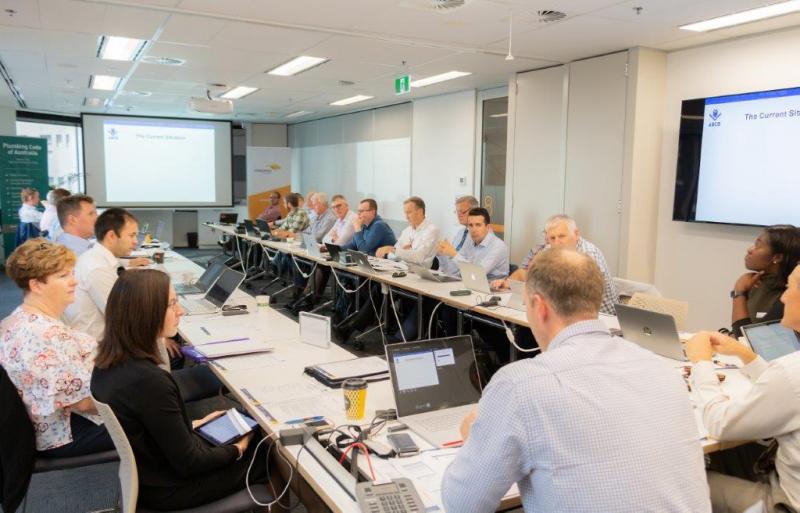On 23 May, an ABCB Forum on the subject of lead in drinking water and plumbing products was held to facilitate discussion with representatives from various sectors of the plumbing industry.
Representatives of manufacturers, suppliers, designers, installers, health officials and representatives from relevant Standards Australia technical committees attended the forum to share their insights on topics including:
- the allowable lead content in both drinking water and plumbing products in contact with drinking water,
- potential options to further reduce lead levels in drinking water, and
- the potential impacts of these options on industry.



Background to the Lead in Plumbing Products Forum
The ABCB has conducted work over the past 16 months to examine the possible contribution of lead in drinking water from plumbing products. This is in response to reports of lead levels being detected in water at concentrations higher than those prescribed in the Australian Drinking Water Guidelines, which provides guidance to water regulators and suppliers on monitoring and managing drinking water quality.
To investigate the issue further, the ABCB commissioned the Macquarie University to conduct a literature review to determine to what extent plumbing products and materials contribute to lead in levels in drinking water. The review resulted in the Lead in Plumbing Products and Materials Report, which confirmed that components containing lead that are used in water supply and plumbing systems can leach lead into drinking water. Multiple factors were identified that influence the release of lead from these components, including variations in:
- chemical composition of the drinking water, including pH;
- galvanic reactions in pipework;
- water temperature;
- use of chloramine for water disinfection;
- hydraulic flow rates; and
- water age and demand (the elapsed time between use of pipes and fixtures).
One of the report’s recommendations was that consideration should be given to low or lead-free plumbing products being used in contact with drinking water.
Where to from here?
Information gained through industry consultation will assist the ABCB in the development of options for further consideration via a Regulatory Impact Statement (RIS) to determine the impacts, costs and benefits of a reduction in the allowable level of lead in drinking water. Additionally the ABCB is consulting with enHealth and other experts to establish the range of health benefits likely to arise from any change. Once completed the RIS will be released for consultation on the ABCB's Consultation Hub.
Should any changes be recommended and endorsed by the ABCB Board, the PCA and/or relevant specification will be amended and released for an appropriate period of public consultation to enable industry another opportunity to provide comment on any proposed changes.
Keep up-to-date with the latest plumbing trends
Our website is where you’ll find information on plumbing initiatives for the NCC and WaterMark. Also, don’t forget to browse other plumbing articles in ABCB Connect and bookmark it today!